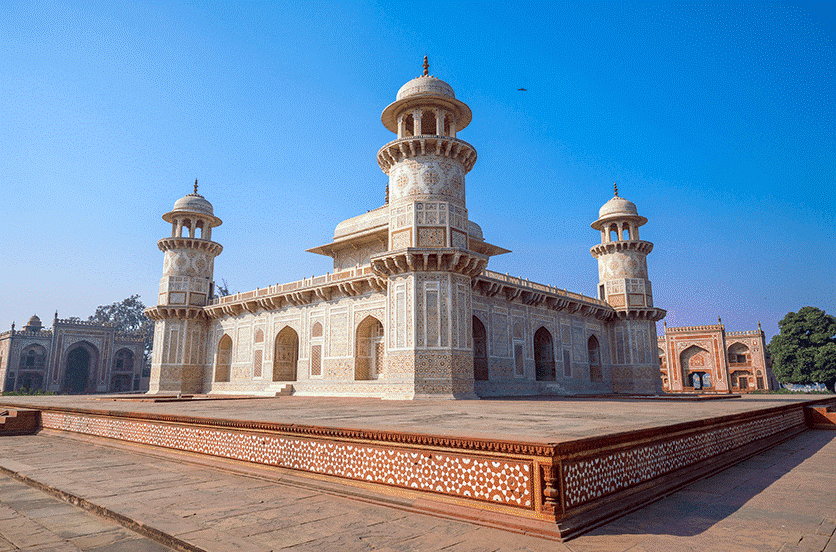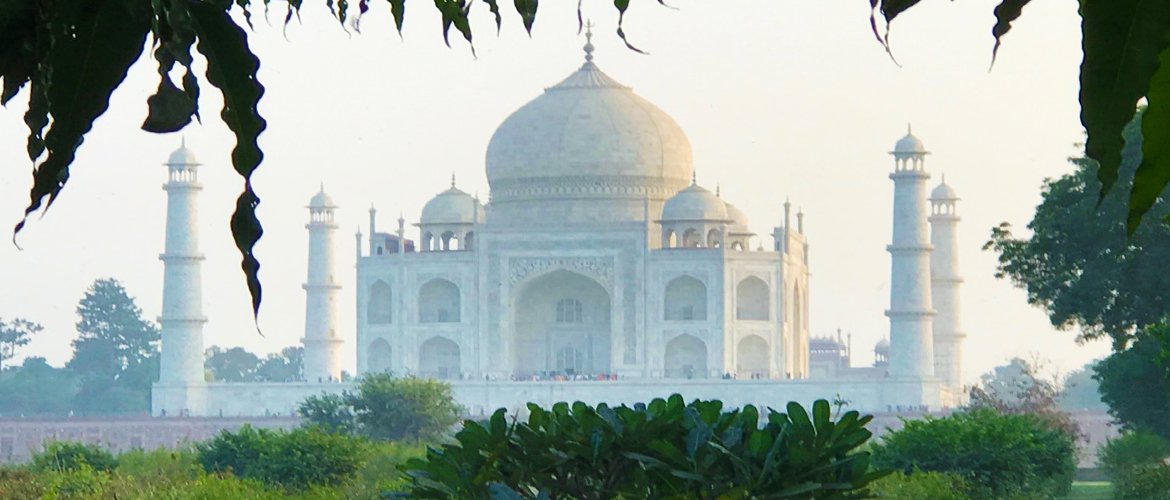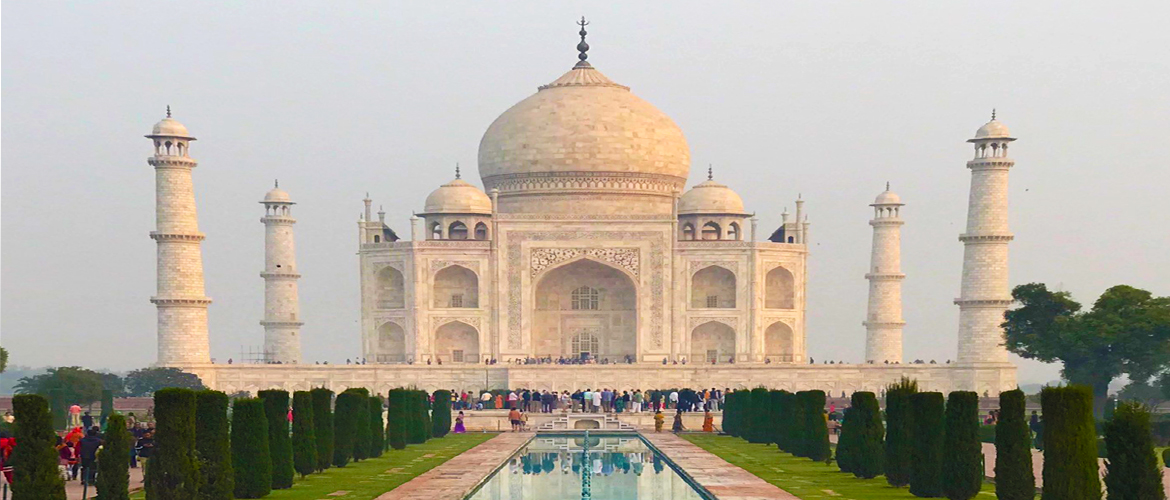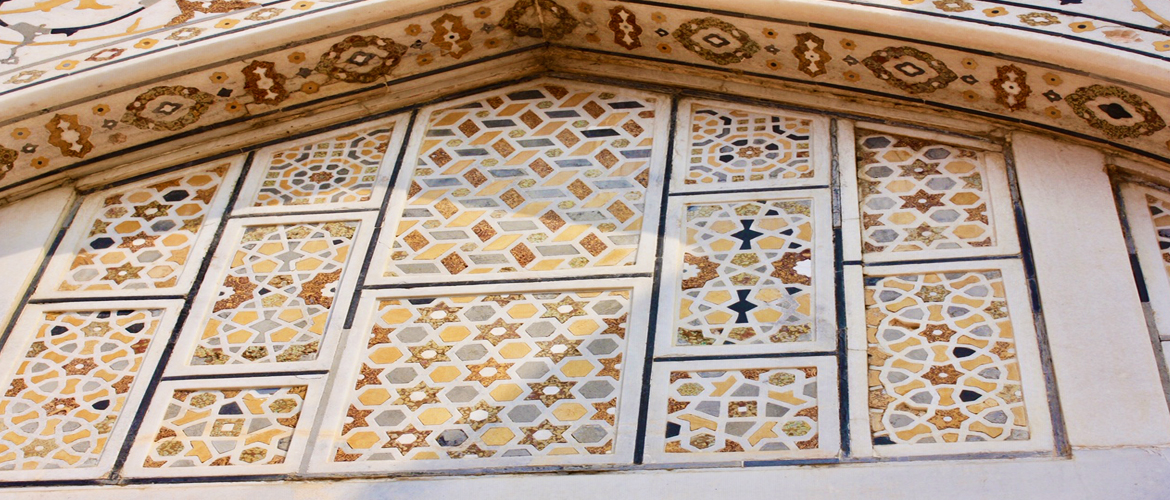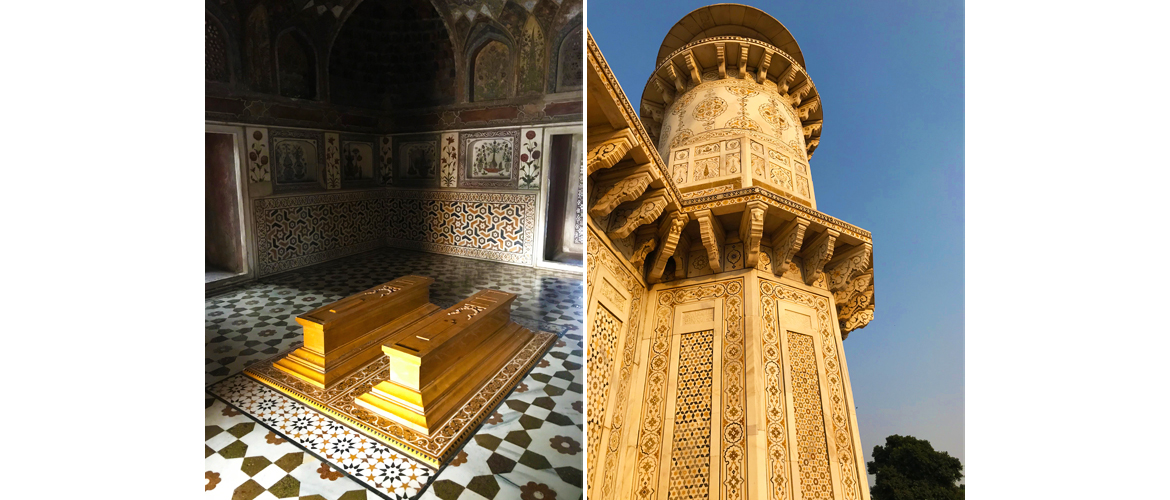Agra
The river Yamuna flows southeast from India’s capital, New Delhi. Downstream from Delhi is the city of Agra, best known as the home of the breathtaking Taj Mahal. One of the wonders of the world, this 17th century mausoleum was built by the Mughal emperor, Shah Jahan in memory of his favourite wife, Mumtaz Mahal. On his barge, the Emperor would often travel between Delhi’s magnificent Red Fort, to Agra. Today, the river has veered away from the Red Fort at Delhi and these cities are separated by a short air-flight or about 4 hours drive along the highway.
Shah Jahan’s grandfather, Akbar, was a contemporary of Queen Elizabeth I and ruled an empire several times larger than she, and had an income several times that of the English monarch. This was a time when over 20% of the world’s GDP was generated in India. Much of this wealth was used to create magnificent buildings, forts and palaces that survive to the present day. Apart from the sublime Taj Mahal, a strong imprint of that legacy and architectural momentum remains in Agra.
Like the Red Fort at Delhi, the one at Agra is also made of red sandstone and is in sighting distance of the Taj Mahal. This formidable crescent-shaped structure was built by Akbar and past the castellated ramparts, held exquisitely built chambers. There is an element of poignancy held in these walls and it was here, that Shah Jahan was imprisoned by his son, Aurangzeb and he is said to have passed the last years gazing at his great creation where his beloved was buried, the Taj Mahal.


About twenty miles out of Agra is the fort-town of Fatehpur Sikri that was built by Akbar; this was soon abandoned due to a lack of water. One of the grandest structures of Fatehpur Sikri is the huge gate, the Buland Darwaza and an oft-cited example of Akbar’s religious tolerance, is an inscription from Jesus, which reminds humans not to consider this world as their permanent home. Almost expectedly, Akbar chose Agra as the place for his own tomb which surrounded by gardens. It was built under his own supervision in the village of Sikandra, near the city.
There are numerous other finely-built mausoleums of Mughal nobility in and around Agra, including the charming Itmad-ud Daulah – also known as the Baby Taj. This was the precursor to the Taj Mahal as it was built by Nur Jahan for her father, the nobleman Mirza Ghiyas Beg in the years 1622-1628, five years before construction of the Taj Mahal began. In Agra, all history seems to come back to the Taj Mahal, as the woman for whom the famous mausoleum was built (Mumtaz Mahal) was also Mirza’s granddaughter.
Between these two historic monuments, and the famous Agra Red Fort nearby where the rulers and their families lived, a lot of Agra’s fame and history comes down to the events that occurred during this one family’s reign in the 1600s.
The Mughal legacy apart, there is more to Agra and its cheek-by-jowl syncretism has multiple strands of history, culture and cuisine jostling each other in the packed bazaars.
